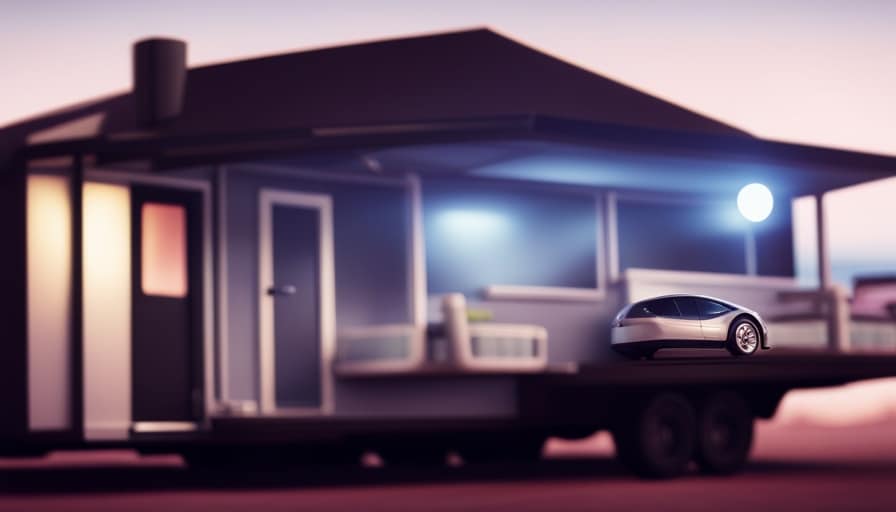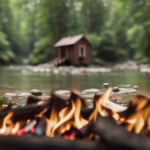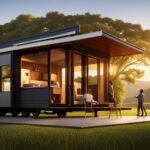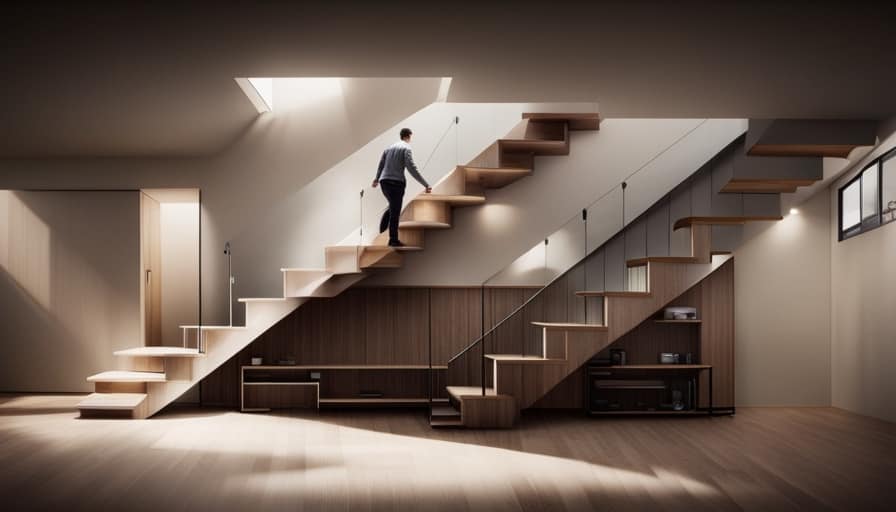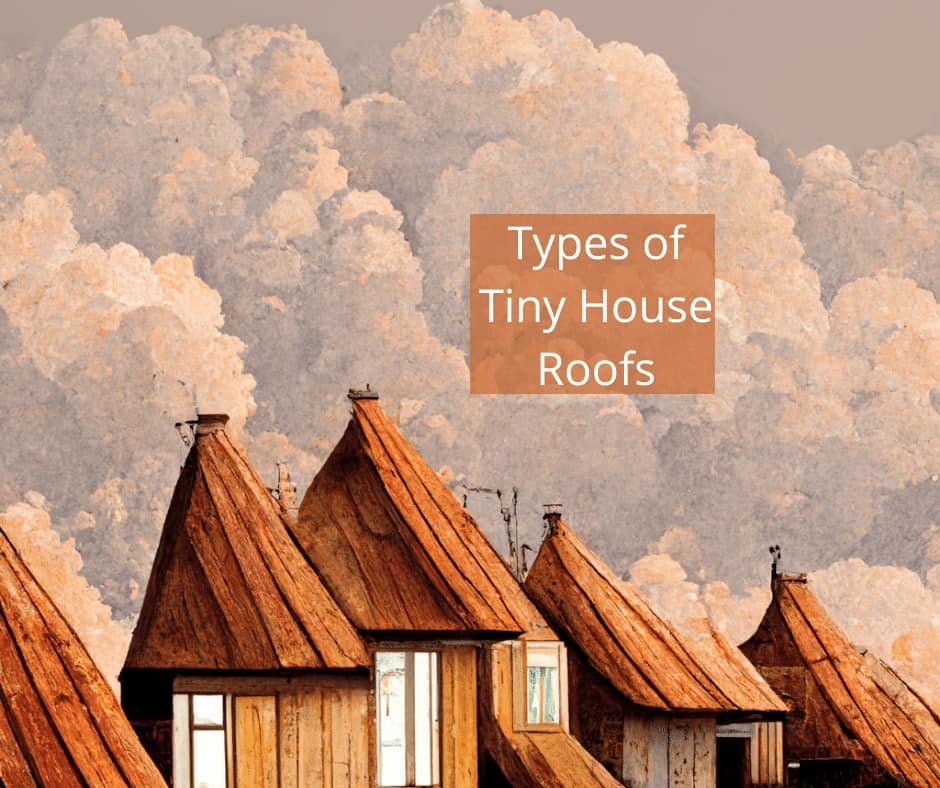Welcome to our amazing adventure exploring the top 10 small home getaways!
Get ready to be whisked away to enchanting countryside retreats, picturesque beachfront escapes, and peaceful forest hideaways.
Immerse yourself in the heart of bustling cities or find solace in cozy cabins with breathtaking mountain views.
Discover the thrill of off-grid living and explore historic hideouts with fascinating stories to tell.
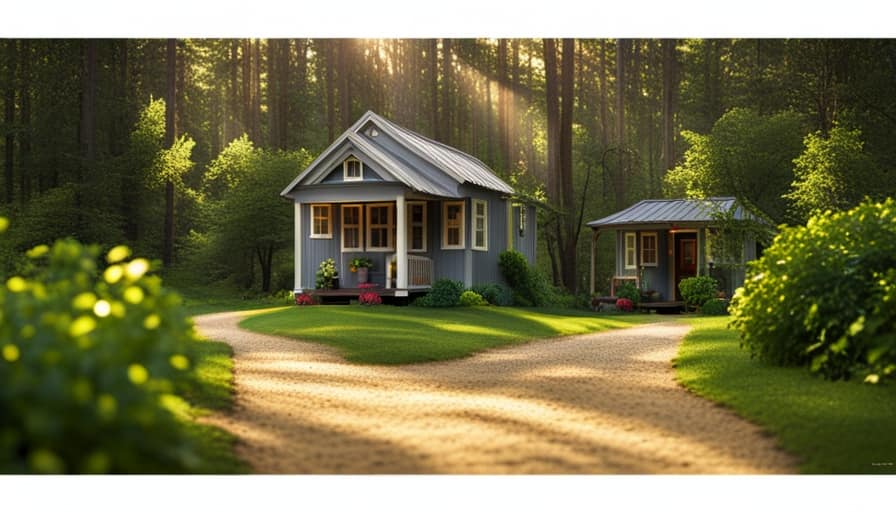
Whether you seek lakeside serenity or desert delights, we’ve curated the ultimate collection of tiny homes just for you.
Let’s embark on this unforgettable adventure together!
Key Takeaways
- The article will showcase the top 10 tiny home hideaways across various categories such as nature retreats, urban living, minimalist living, and desert living.
- These tiny home hideaways offer unique experiences and cater to different preferences, from quaint countryside retreats to beachfront escapes, secluded forest hideaways, and cozy cabins with mountain views.
- Urban living in tiny homes provides an innovative solution to the growing demand for affordable housing in urban areas, offering lower costs for utilities, maintenance, and property taxes.
- Minimalist living in tiny homes allows individuals to focus on what truly matters, with clean lines, neutral colors, and clutter-free spaces creating a calm and peaceful environment.
A Quaint Retreat in the Countryside
We’ve found a charming little hideaway in the countryside that will make you feel like you’ve stepped into a fairytale.
This quaint retreat is the epitome of countryside charm and offers a serene escape from the hustle and bustle of everyday life. Nestled amidst rolling hills and picturesque landscapes, this idyllic getaway is perfect for those seeking rural relaxation.
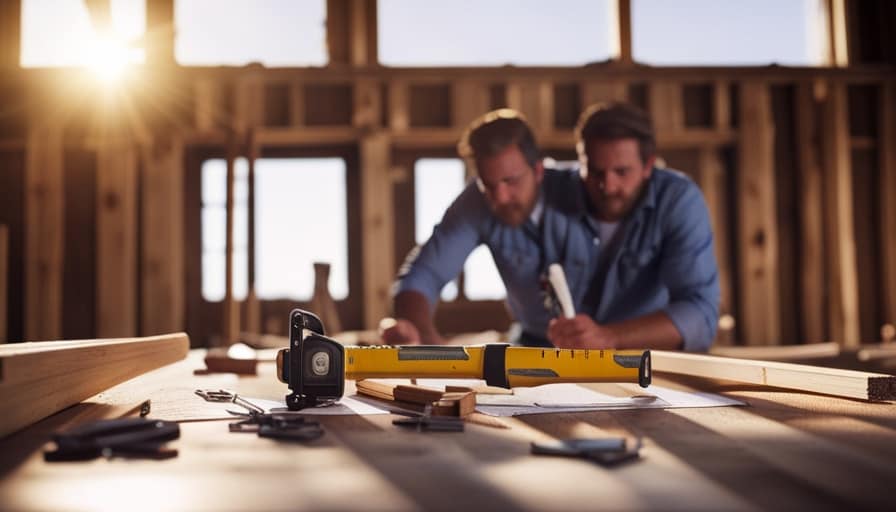
As you arrive, you’ll be greeted by the sight of a charming cottage with a thatched roof and colorful flower gardens. Step inside, and you’ll find a cozy living space complete with a crackling fireplace and rustic furnishings.
Outside, you can explore the surrounding countryside, take leisurely walks along peaceful trails, or simply sit back and enjoy the tranquility.
This hidden gem truly captures the essence of countryside charm and promises a rejuvenating experience for all who visit.
Coastal Charm: Beachfront Tiny Home Escapes
We were amazed by the breathtaking coastal charm and the stunning views that awaited us at these beachfront tiny home escapes. The combination of beachfront relaxation and seaside tranquility created the perfect getaway for those seeking a peaceful retreat.
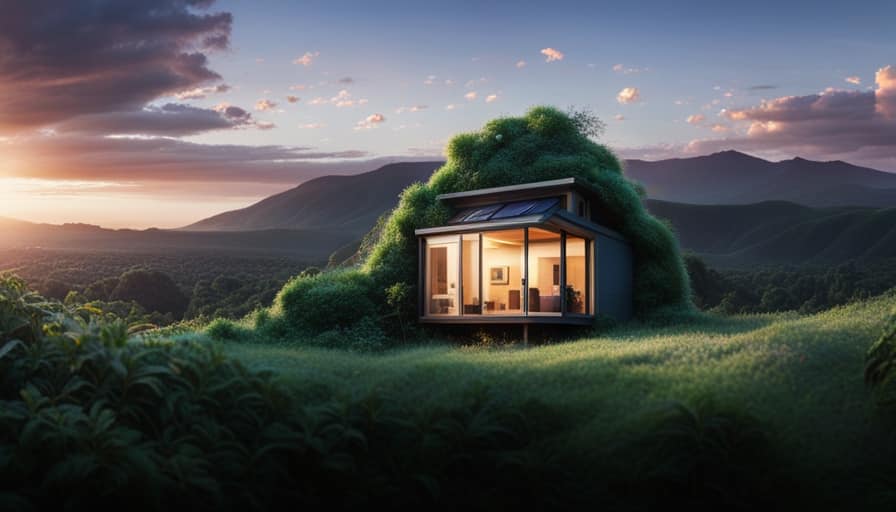
Each tiny home was thoughtfully designed to maximize the coastal views, with large windows that allowed the natural light to flood in. The sound of the waves crashing against the shore provided a soothing soundtrack to our stay. The interiors were tastefully decorated with a coastal theme, featuring soft hues of blues and whites that reflected the colors of the ocean.
We spent our days strolling along the sandy beaches, soaking up the sun, and enjoying the serenity of the ocean. These beachfront tiny home escapes truly offered a slice of paradise and an opportunity to reconnect with nature in the most idyllic setting.
Embrace Nature: Secluded Forest Hideaways
The lush greenery of the secluded forest hideaways beckon us to immerse ourselves in nature’s embrace. These tiny homes nestled deep within the woods offer a serene escape from the chaos of everyday life. Imagine waking up to the soothing sounds of birds chirping and the gentle rustling of leaves in the wind.
Secluded mountain getaways provide the perfect opportunity for hiking, exploring, and reconnecting with nature. Tranquil lakeside retreats offer a picturesque setting for fishing, kayaking, and simply enjoying the peacefulness of the water. Whether you prefer the majestic beauty of the mountains or the calming presence of a lake, these forest hideaways provide a truly immersive experience in nature.
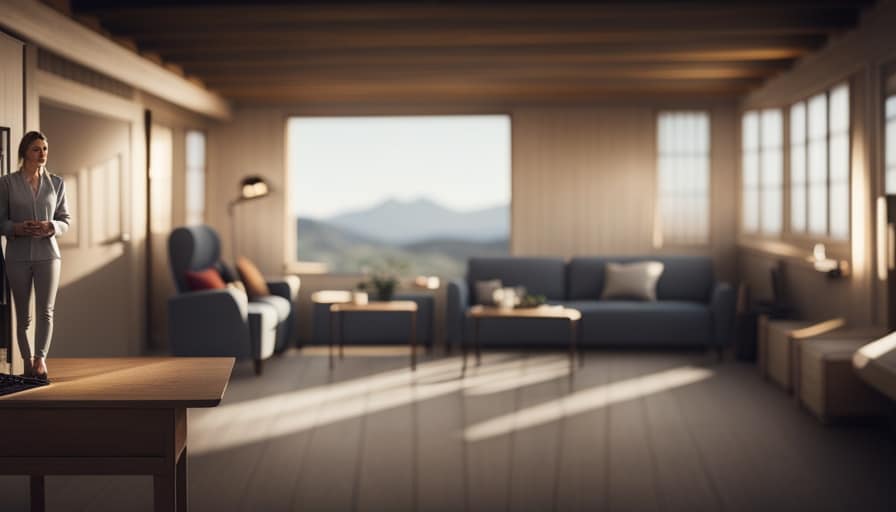
But if you’re seeking a different kind of escape, let’s venture into the next section and discover the urban oasis: tiny homes in the heart of the city.
Urban Oasis: Tiny Homes in the Heart of the City
Let’s explore the benefits of living in an urban tiny home and the challenges posed by city zoning regulations.
Urban tiny homes offer a unique opportunity to have a cozy and sustainable living space in the heart of the city.
However, navigating the complex web of zoning regulations can be a hurdle for those looking to embrace this lifestyle.
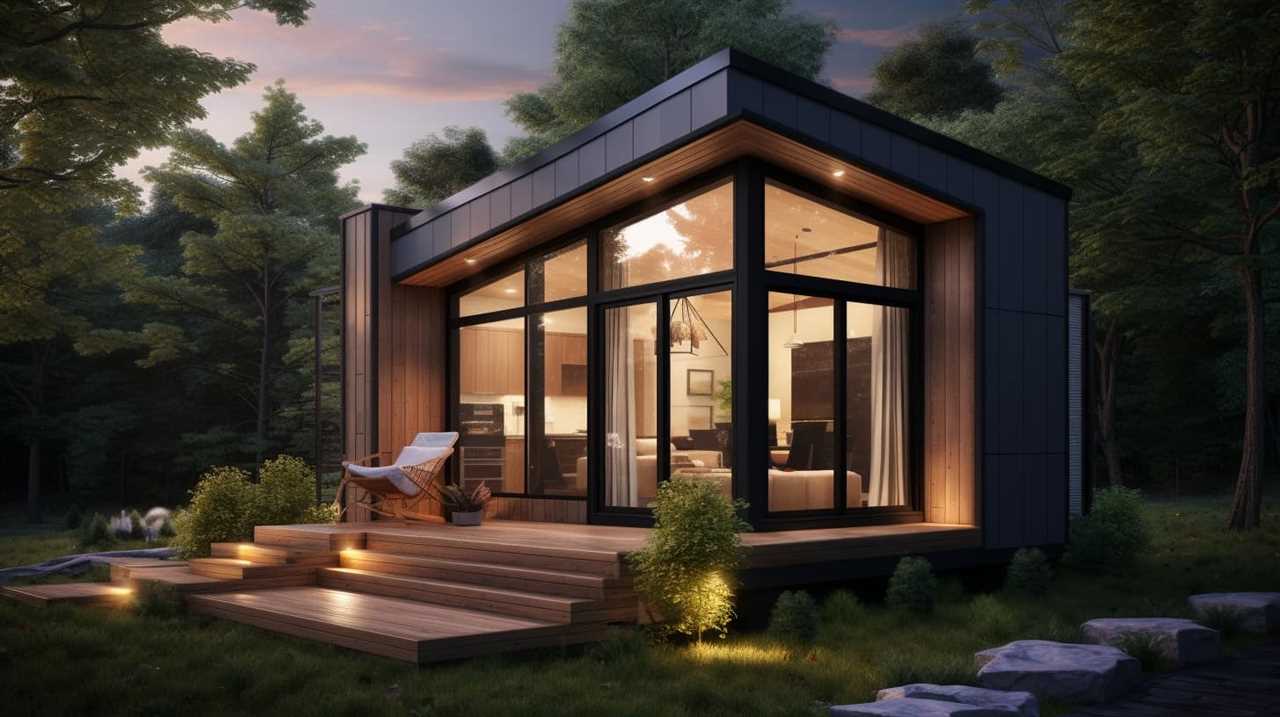
Urban Tiny Home Benefits
Our research reveals that living in urban tiny homes offers numerous advantages for city dwellers. Compared to suburban tiny homes, urban tiny homes provide unparalleled convenience and accessibility to city amenities. Imagine being just steps away from cafes, restaurants, and cultural events, all while enjoying the coziness and simplicity of a tiny home.
Not only do urban tiny homes allow for a more sustainable lifestyle, but they also offer economic benefits. With lower costs for utilities, maintenance, and property taxes, urban tiny homes provide an affordable housing option in expensive city areas. Additionally, the smaller size of these homes means less space to clean and maintain, allowing residents to focus on the things that truly matter to them.
Living in an urban tiny home truly offers an oasis in the heart of the city.
City Zoning Regulations
Although city zoning regulations can pose challenges, we’ve found that urban tiny homes offer a unique oasis in the heart of the city. These compact dwellings provide an innovative solution to the growing demand for affordable housing in urban areas while adhering to city planning and housing regulations.
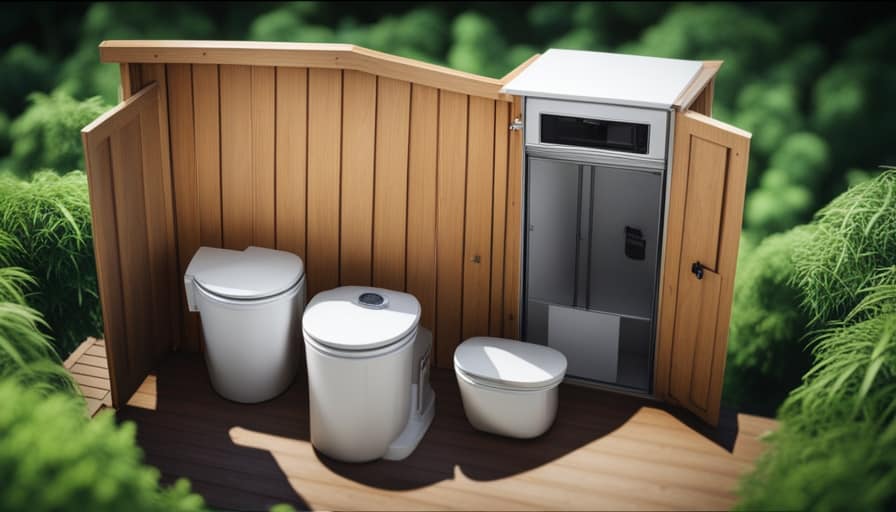
Here are four reasons why urban tiny homes are a great option:
-
Maximizing space: With thoughtful design and creative use of every inch, tiny homes allow for efficient use of limited urban space.
-
Sustainability: Tiny homes often incorporate eco-friendly features like solar panels and rainwater harvesting, promoting a greener urban environment.
-
Affordability: By minimizing square footage, tiny homes offer a more affordable housing option for those looking to live in the city.

-
Community connection: Urban tiny home communities foster a strong sense of camaraderie and support among residents, creating a close-knit neighborhood in the heart of the city.
Embracing the challenges of city zoning regulations, urban tiny homes offer a promising solution for those seeking an affordable and sustainable housing option in urban areas.
Mountain Getaway: Cozy Cabins With a View
We’re excited to share our favorite mountain getaway spots, featuring cozy cabins with breathtaking views.
When it comes to finding the perfect mountain retreat, nothing beats the charm and beauty of an alpine hideaway. Nestled amidst towering peaks and surrounded by lush greenery, these cozy cabins offer a tranquil escape from the hustle and bustle of everyday life.
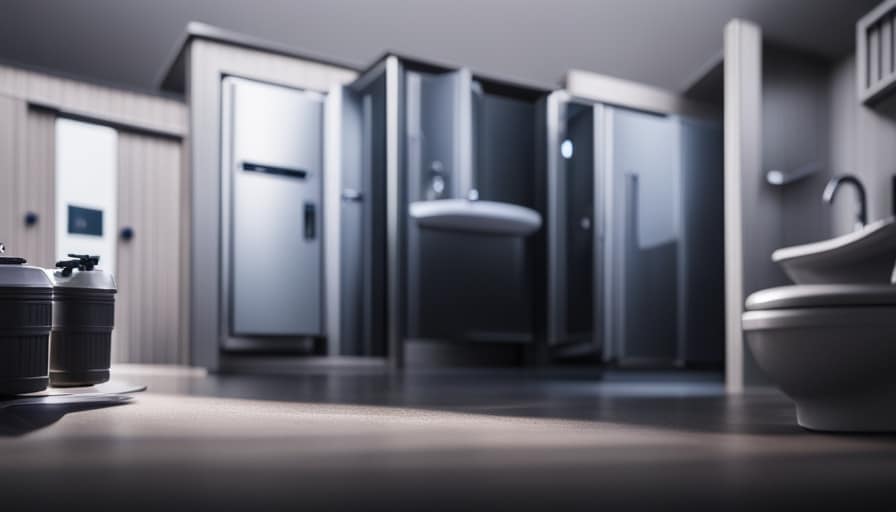
Imagine waking up to the sound of birds chirping, stepping outside onto your private deck, and being greeted by sweeping vistas of majestic mountains. Whether you’re looking for a romantic weekend getaway or a family vacation, these mountain cabins provide the perfect setting for relaxation and rejuvenation.
Modern Minimalism: Sleek and Stylish Tiny Homes
Let’s explore the world of modern minimalism in tiny homes, where sleek and stylish designs take center stage.
These tiny homes are all about space-saving design ideas that are both functional and fashionable. From clever storage solutions to clean lines and minimalist aesthetics, these tiny homes prove that less can truly be more.
Space-Saving Design Ideas
We’ve compiled a list of space-saving design ideas that will transform your tiny home into a sleek and stylish oasis.
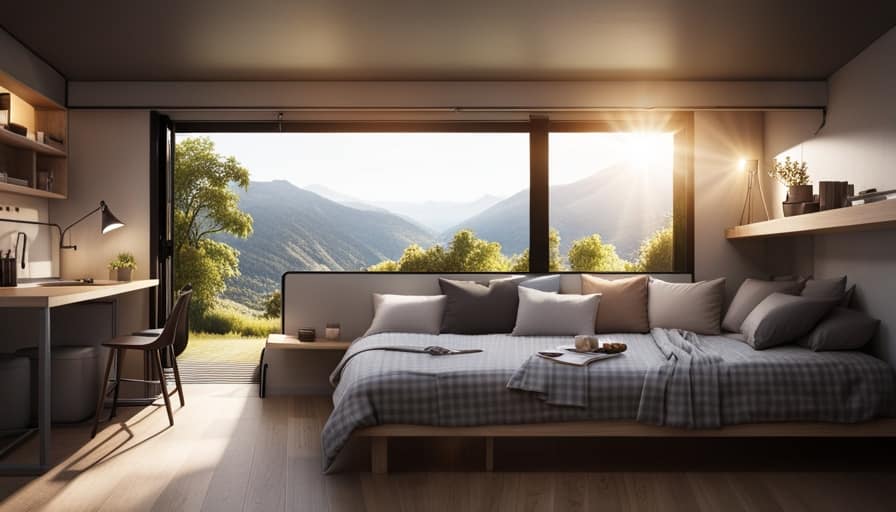
Here are four innovative solutions to maximize your space:
-
Utilize vertical storage: Install floating shelves or wall-mounted cabinets to free up valuable floor space and keep your belongings organized.
-
Invest in multi-purpose furniture: Opt for pieces that serve multiple functions, such as a sofa that can convert into a bed or a coffee table with hidden storage compartments.
-
Get creative with hidden storage: Look for opportunities to tuck away items in unexpected places, like under the stairs or inside ottomans.
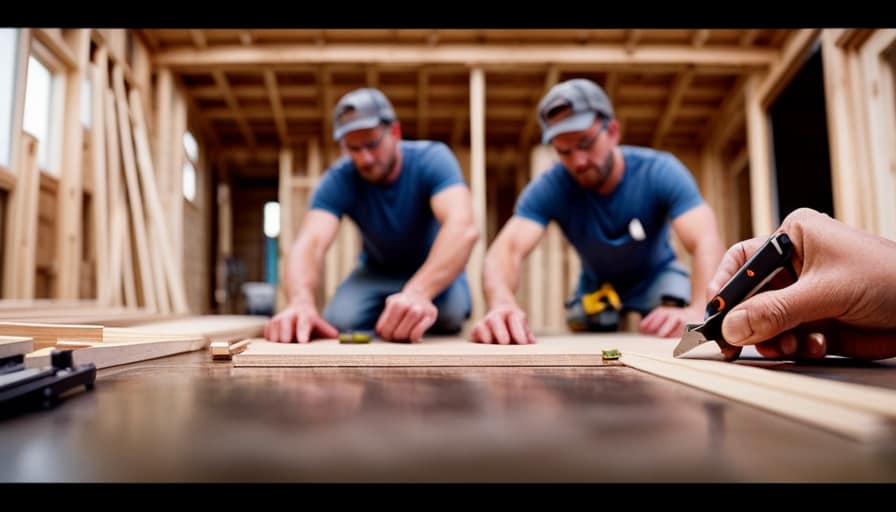
-
Embrace built-in furniture: Custom-built furniture that fits seamlessly into your tiny home can make the most of every inch, from built-in seating with hidden storage to fold-down tables.
With these space-saving storage solutions and multi-purpose furniture designs, you can create a functional and stylish living space in your tiny home.
Functional and Fashionable
Our tiny homes showcase the perfect blend of functionality and fashion, embracing modern minimalism with sleek and stylish designs.
These homes aren’t only designed to maximize space but also to promote sustainable living. With the growing concern for the environment, our homes are built with eco-friendly materials and energy-efficient features. From solar panels to rainwater harvesting systems, we strive to make our tiny homes as sustainable as possible.
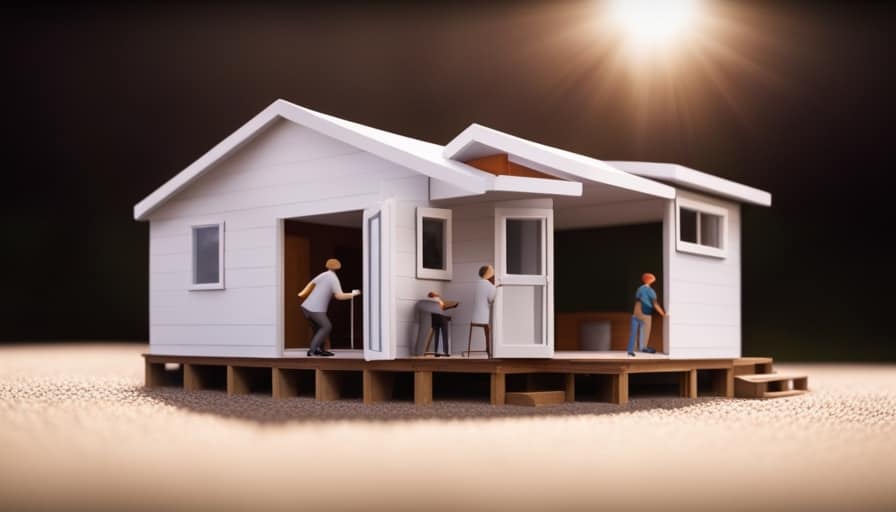
In terms of interior design trends, we focus on creating spaces that are both aesthetically pleasing and practical. Our homes feature clean lines, neutral colors, and smart storage solutions. Every inch of space is utilized to ensure that our homeowners can live comfortably and stylishly in their tiny homes.
Off-Grid Living: Remote Tiny Home Adventures
Living off-grid in remote tiny homes allows us to experience the freedom and self-sufficiency of sustainable living. It’s a chance to disconnect from the fast-paced world and embrace a simpler, more minimalist lifestyle. Here are four reasons why off-grid living in remote tiny homes is an adventure worth pursuing:
-
Sustainable Energy: With solar panels and wind turbines, we can generate our own electricity, reducing our reliance on fossil fuels and minimizing our carbon footprint.
-
Water Conservation: Off-grid living encourages us to be mindful of our water usage. Rainwater collection systems and composting toilets help us conserve this precious resource.

-
Connection with Nature: Living in a remote tiny home allows us to immerse ourselves in the beauty of nature. We can wake up to breathtaking views and explore the wilderness right outside our doorstep.
-
Self-Sufficiency: From growing our own food to learning essential survival skills, off-grid living empowers us to become more self-reliant and independent.
Embarking on an off-grid adventure in a remote tiny home offers an opportunity for personal growth, environmental stewardship, and a deeper connection with the world around us.
Historic Hideouts: Tiny Homes With a Story to Tell
Let’s delve into the fascinating world of historic hideouts, where tiny homes hold the secrets and stories of the past. These tiny homes aren’t just quaint and charming; they’re also important pieces of our architectural history.
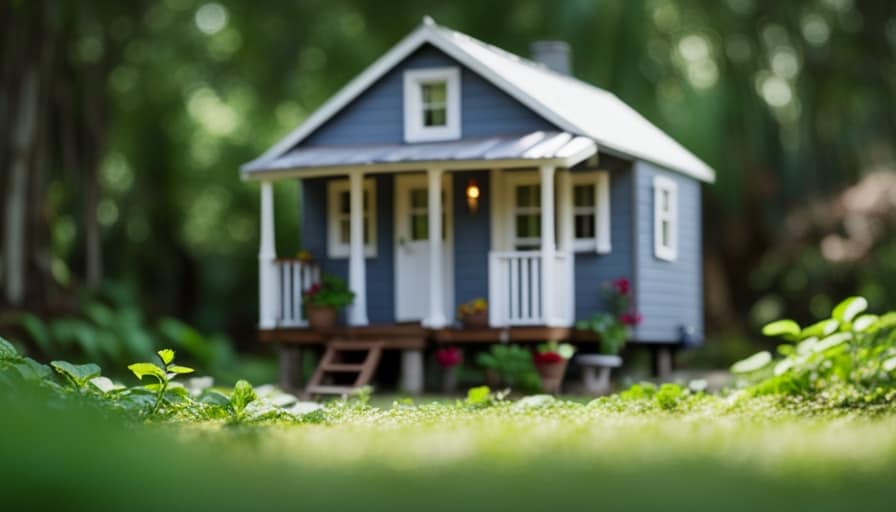
Historic preservation is vital in ensuring that these tiny homes are protected for future generations to appreciate and learn from. These homes have architectural significance, showcasing unique styles and craftsmanship from different eras.
From Victorian cottages to rustic log cabins, each tiny home has a story to tell. By preserving these homes, we honor the people who lived in them and the cultural heritage they represent.
Exploring these historic hideouts allows us to step back in time and gain a deeper understanding of our past. So let’s uncover these hidden gems and celebrate the rich history they hold.
Lakeside Serenity: Tranquil Tiny Home Retreats
Get ready to immerse yourselves in stunning lakeside locations that offer the perfect backdrop for a serene and tranquil tiny home retreat.
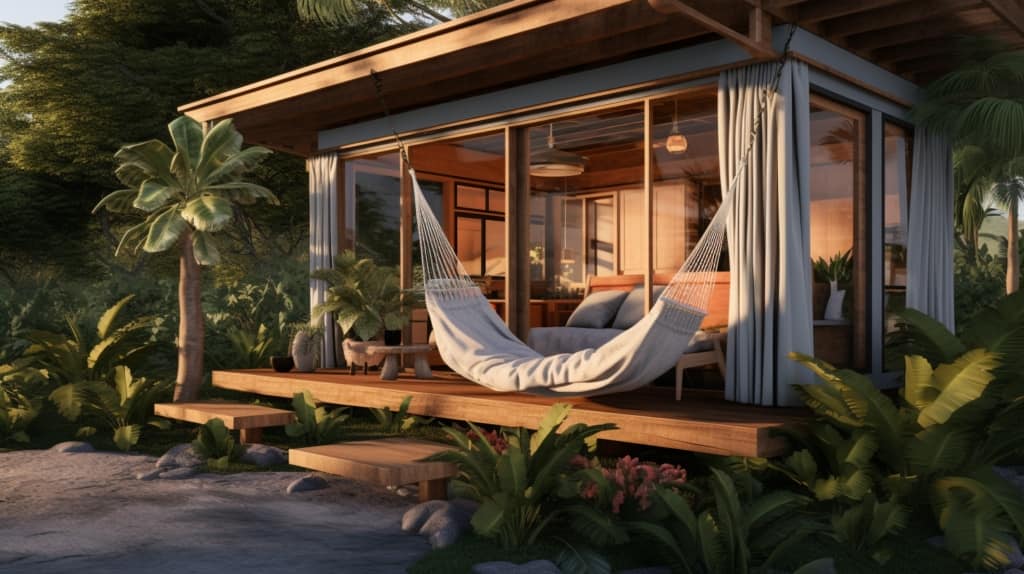
Picture waking up to breathtaking views of crystal-clear waters, surrounded by peaceful nature and the sound of gentle waves.
These tiny homes provide a cozy minimalist living experience, where you can escape the hustle and bustle of everyday life and find solace in the beauty of nature.
Stunning Lakeside Locations
We’ve found the perfect lakeside location for a tranquil tiny home retreat. Nestled among the serene waters and surrounded by lush greenery, this lakeside hideaway offers the perfect escape from the hustle and bustle of everyday life.
Here’s why you’ll fall in love with this stunning lakeside location:
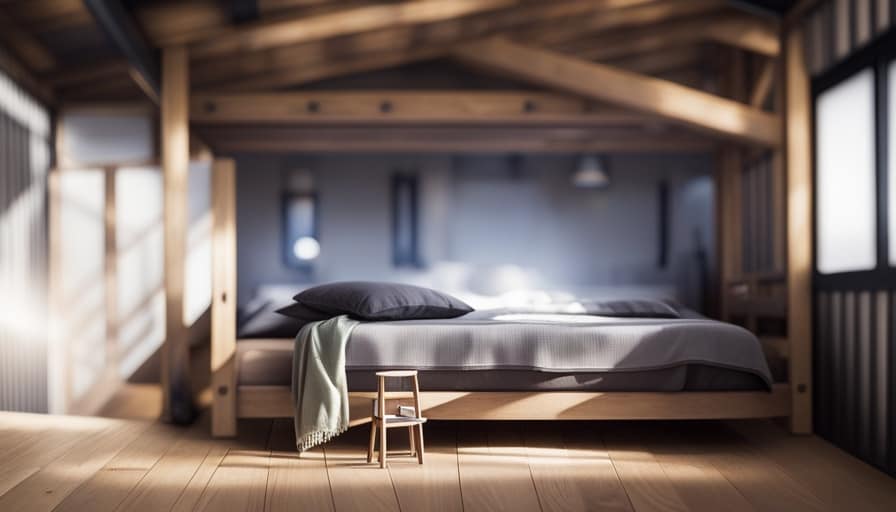
-
Breathtaking Views: Wake up to panoramic views of the crystal-clear lake, sparkling in the morning sunlight. It’s a sight that will take your breath away.
-
Peaceful Surroundings: Immerse yourself in nature’s tranquility as you relax on your porch, listening to the gentle lapping of the waves and the chirping of birds.
-
Lakeside Activities: Enjoy a wide range of lakeside activities, from fishing and kayaking to swimming and paddleboarding. There’s something for everyone to enjoy.
-
Welcoming Community: Join a vibrant lakeside community, where friendly neighbors gather for bonfires, potlucks, and storytelling under the starry night sky.
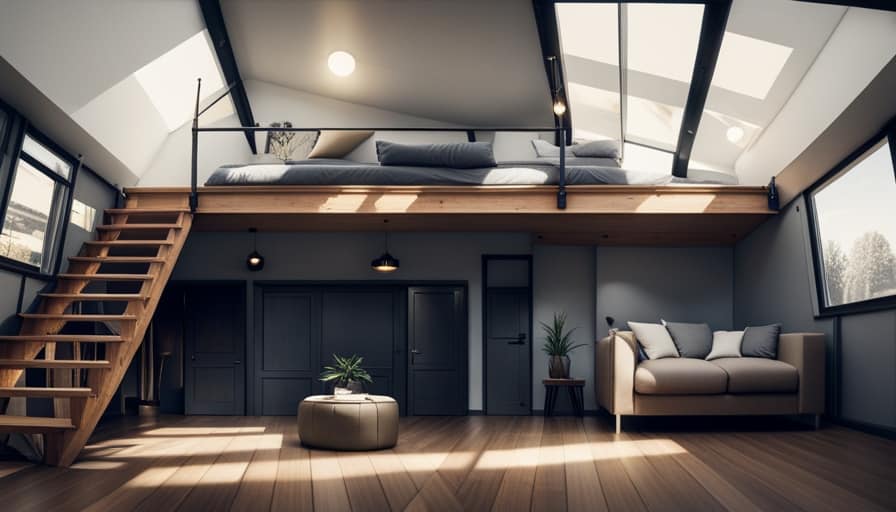
Escape to this stunning lakeside location and experience the beauty and serenity that awaits you. It’s the perfect place to unwind, recharge, and create lasting memories.
Peaceful Nature Escapes
As we explore peaceful nature escapes, we’ll discover the serenity of lakeside retreats and the tranquility they offer.
Imagine waking up to the sound of gentle waves lapping against the shore, surrounded by towering mountains and lush greenery.
These secluded mountainous getaways provide the perfect escape from the hustle and bustle of everyday life. Serene lakeside escapes offer a sense of peace and rejuvenation, allowing you to reconnect with nature and find inner calm.
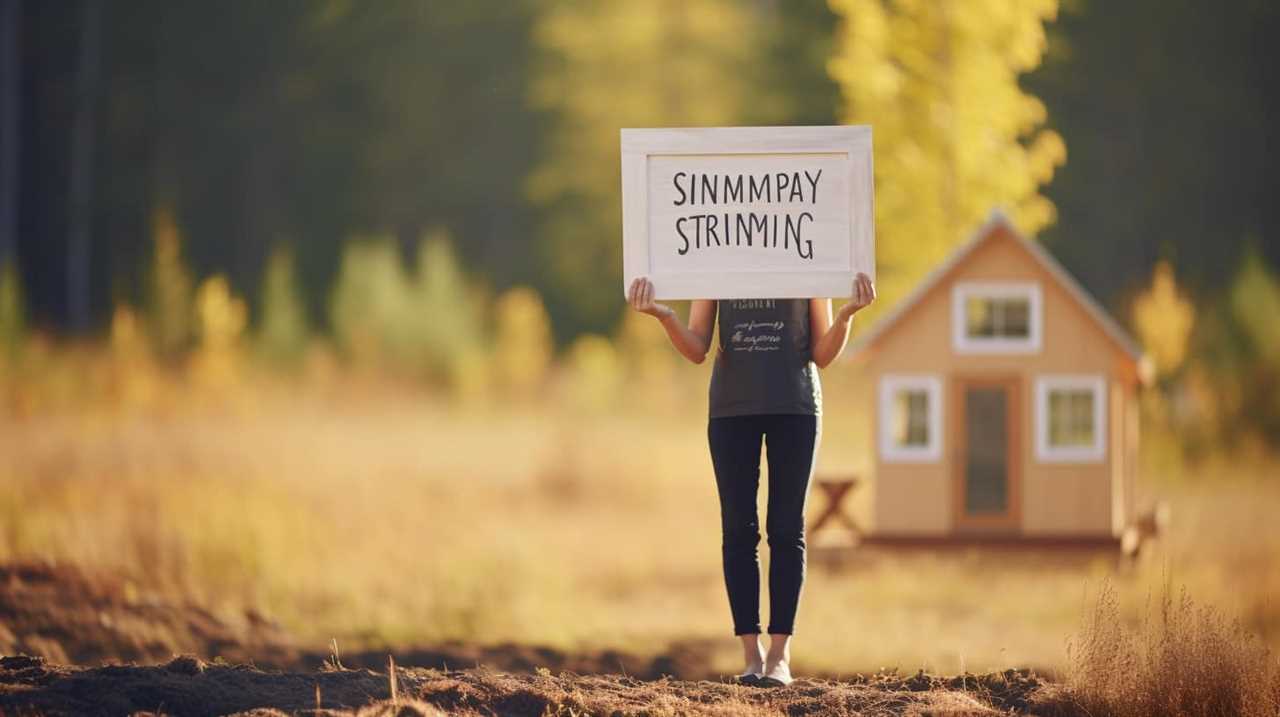
Whether you choose to spend your days fishing on the lake, hiking through scenic trails, or simply lounging by the water’s edge, these tiny home retreats provide a tranquil haven for relaxation and reflection.
Experience the beauty and serenity of nature in these idyllic lakeside locations.
Cozy Minimalist Living
During our stay at these lakeside tiny home retreats, we’ll experience the cozy minimalist living and the serenity they provide. Here are four reasons why this lifestyle is worth considering:
-
Minimalist Interior Design: These tiny homes are designed with simplicity and functionality in mind. The clean lines, neutral colors, and clutter-free spaces create a sense of calm and tranquility.
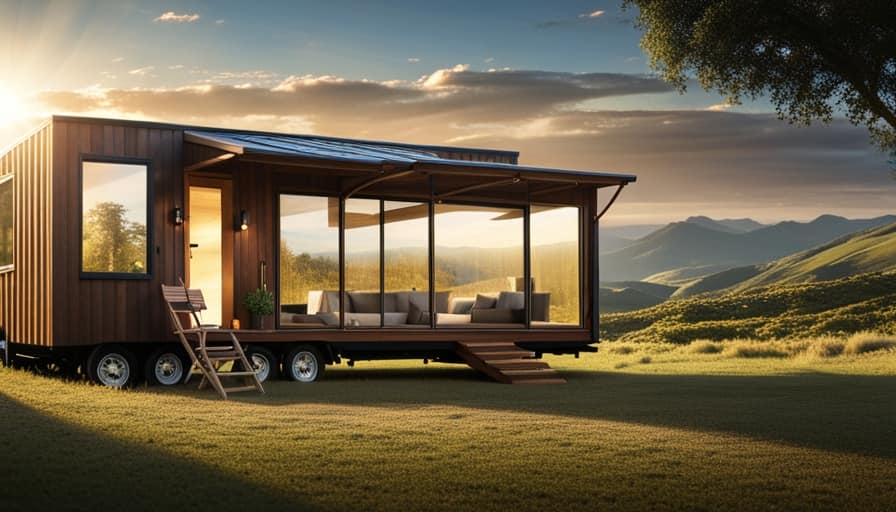
-
Downsizing Benefits: Living in a tiny home allows you to let go of excess belongings and focus on what truly matters. It’s a chance to simplify your life, reduce your environmental footprint, and save money on expenses.
-
Intimate Connection with Nature: Being surrounded by the serene beauty of a lakeside setting offers a unique opportunity to connect with nature. Imagine waking up to the sound of birds chirping and enjoying your morning coffee while gazing at the peaceful waters.
-
Peaceful Retreat: These tiny homes provide a tranquil escape from the hustle and bustle of everyday life. Whether you’re seeking solitude or quality time with loved ones, these cozy retreats offer the perfect setting for relaxation and rejuvenation.
Prepare to embark on a journey of cozy living and lakeside serenity as we explore these tranquil tiny home retreats.
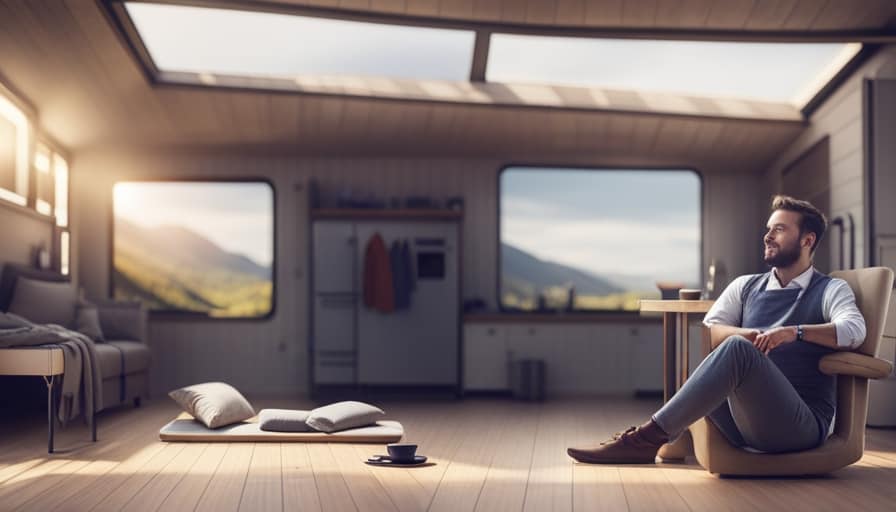
Desert Delights: Tiny Homes in Arid Landscapes
Our team has explored numerous desert landscapes and discovered ten remarkable tiny homes nestled in these arid terrains. Desert sustainability and arid climate considerations were key factors in the design and construction of these homes, ensuring they blend seamlessly with their surroundings while minimizing environmental impact.
These desert hideaways are equipped with innovative features such as solar panels, rainwater harvesting systems, and natural cooling techniques to maximize energy efficiency and reduce water consumption. Each tiny home boasts breathtaking views of the vast desert landscapes, providing a serene and tranquil retreat for those seeking solace in nature.
With their compact yet functional designs, these homes offer all the necessary amenities while maintaining a minimal ecological footprint. Embrace the beauty of the desert and immerse yourself in a sustainable and harmonious tiny home experience.
Frequently Asked Questions
What Is the Average Cost of a Tiny Home in Each of These Locations?
The average cost of a tiny home in each of these locations varies, depending on factors such as size, amenities, and location. Availability for both rent and purchase is generally limited, so it’s important to research and plan accordingly.
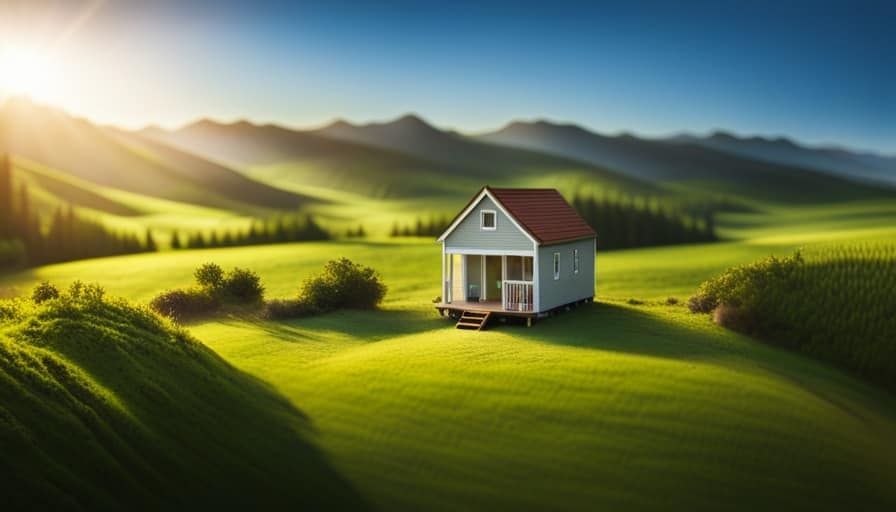
Are These Tiny Homes Available for Rent or Purchase?
Yes, these tiny homes are available for both rent and purchase. With a variety of ownership options, you can choose to live in one of these unique hideaways or experience the tiny home lifestyle through short-term rentals.
What Amenities Are Included in These Tiny Homes?
In these tiny homes, you’ll find an array of amenities designed to make your stay comfortable and convenient. From fully equipped kitchens to cozy sleeping lofts, these homes offer everything you need for a delightful getaway.
Are Pets Allowed in These Tiny Homes?
Yes, pets are allowed in these cozy hideaways! Our pet-friendly amenities include dog beds, food bowls, and even a fenced-in yard. So bring your furry friend along and enjoy a relaxing getaway together.
Are These Tiny Homes Eco-Friendly and Sustainable?
Yes, these tiny homes are designed with eco friendly construction materials and utilize sustainable energy sources. We prioritize environmental impact, ensuring a comfortable and sustainable living experience for our guests.
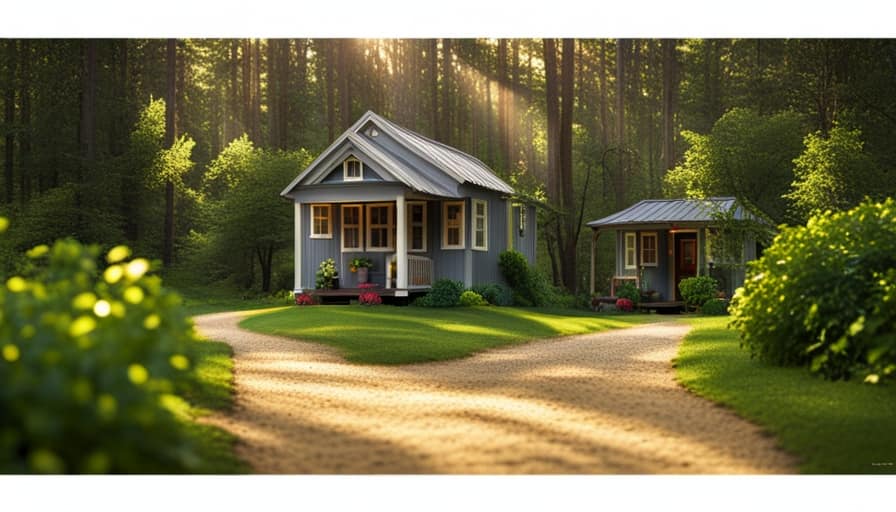
Conclusion
In conclusion, these top 10 tiny home hideaways offer a variety of unique and enchanting experiences for those seeking a tranquil escape. Whether you prefer the countryside, the beach, the forest, the city, the mountains, remote locations, historic sites, lakeside serenity, or the desert, there’s a tiny home waiting to provide you with a memorable getaway.
So, pack your bags and immerse yourself in the beauty and charm of these remarkable hideouts. Let your adventurous spirit roam free!
I’m Theodore, and I love tiny houses. In fact, I’m the author of Tiny House 43, a book about tiny houses that are also tree houses. I think they’re magical places where imaginations can run wild and adventures are just waiting to happen.
While tree houses are often associated with childhood, they can be the perfect adult retreat. They offer a cozy space to relax and unwind, surrounded by nature. And since they’re typically built on stilts or raised platforms, they offer stunning views that traditional homes simply can’t match.
If you’re looking for a unique and romantic getaway, a tree house tiny house might just be the perfect option.
